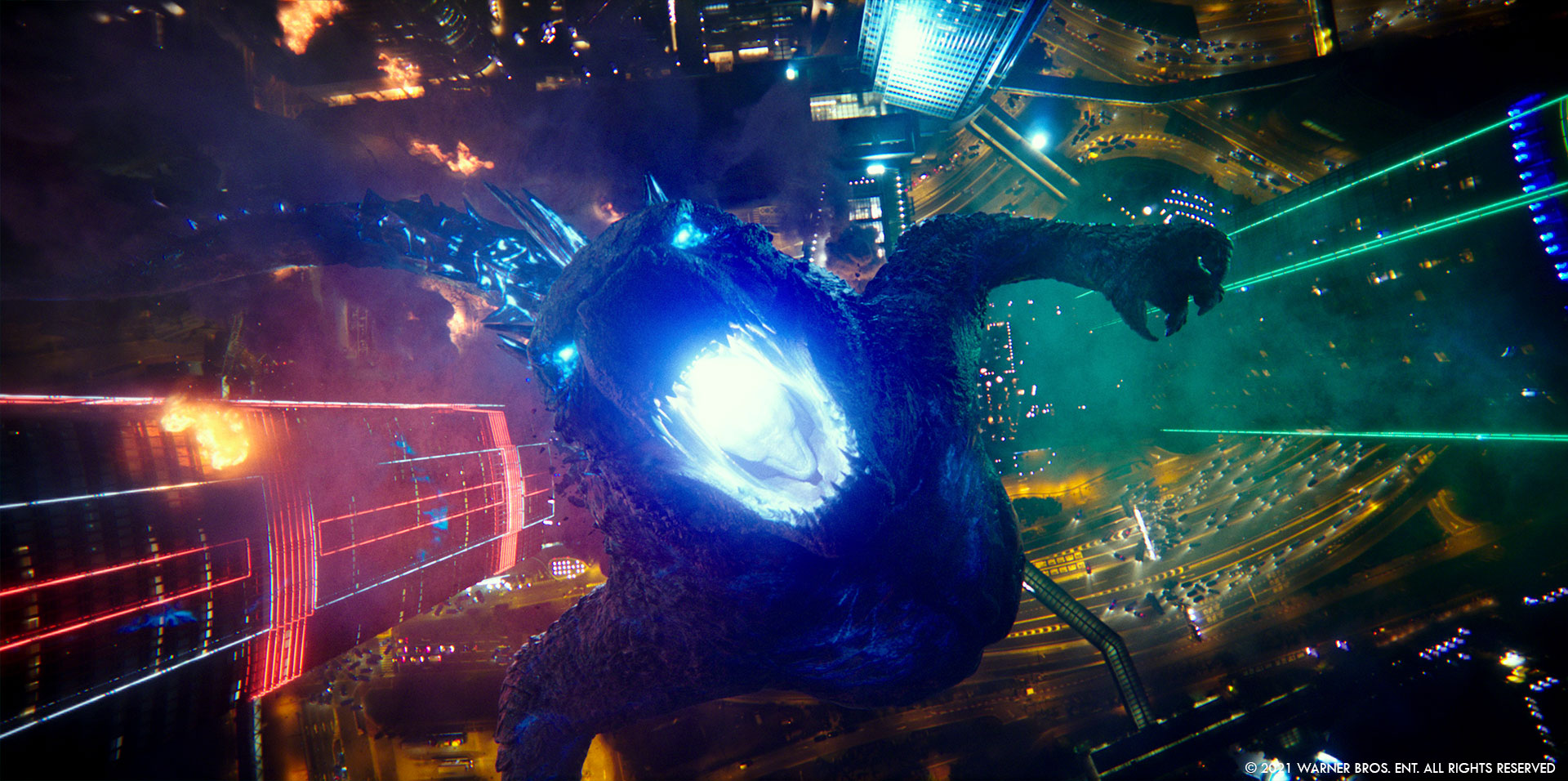Last April, John « DJ » DesJardin explained the visual effects work on Zack Snyder’s Justice League. He comes back today to talk about an impressive clash of the titans with Godzilla vs Kong.
How did you get involved on this show?
I first met with Adam Wingard in March of 2018. I also connected with Production Designers Owen Paterson (with whom I worked on The Matrix Sequels) and Tom Hammock. They walked me through the pre-production War Room, the walls of which were covered with some very compelling concept art that illustrated the major set pieces of the film.
What was your feeling about bringing to life the epic battles between two iconic monsters of cinema?
I was PSYCHED!
How was the collaboration with Director Adam Wingard?
Adam was particularly adept at articulating his intent for every scene, especially when it came to the physical and emotional state of Godzilla and Kong. And later, Mecha Godzilla as well.
That’s his first really big VFX show. How did you help him with about the visual effects?
We tried to get Adam familiar with the VFX approval steps. I thought he adapted pretty well to the differences between blocking and fine animation, also look dev vs. rendered animation takes. I imagine it can be pretty jarring, somewhat daunting to get used to this iterative process of fine tuning hundreds of shots.
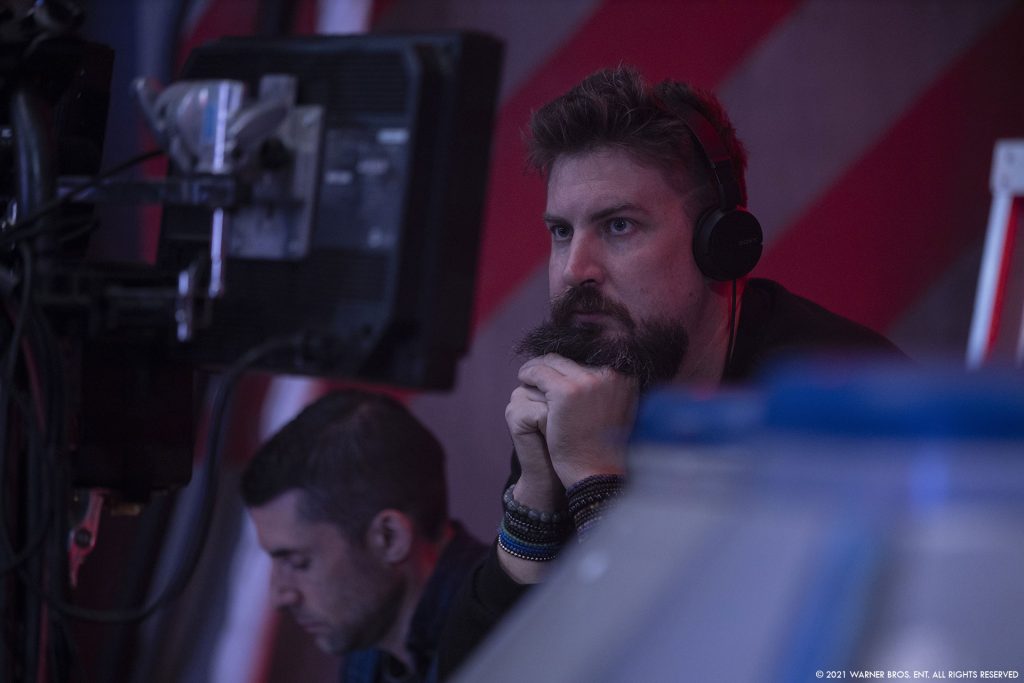
How did you organize the work with your VFX Producer?
Tamara Kent and I broke down the work based on environments and set pieces. We picked Scanline VFX to do the Ocean Battle and the ship work in general. We wanted Weta Digital to handle the more subtle acting moments in the film: The opening on Skull Island, the Monarch Arctic Outpost, and the world-building of Hollow Earth. MPC had worked on the previous two Godzilla films, so we targeted the Hong Kong Neon Night fight for them, handing off the transition to daytime back to Scanline as it included Mecha Godzilla. While all of the teams shared the major assets of Godzilla and Kong, Scanline was the only team to animate Mecha Godzilla, both in the Apex Test Arena and the Big Melee at the end.
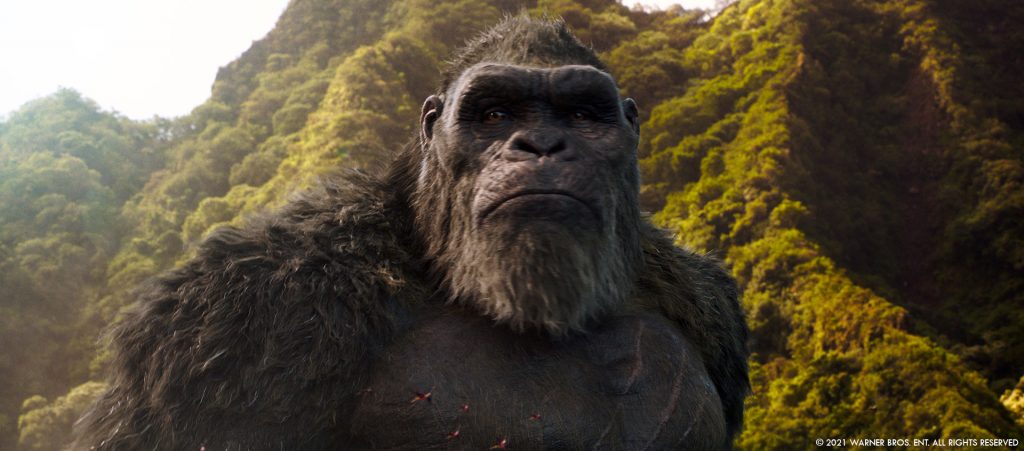
Most of the epic confrontations are full CG, how did you work with previs and postvis about that?
When I came onto the project, the Ocean Battle Previs was already being fine tuned. It clearly had a lot of Adam’s time and attention put into it. There was also a template for the Neon Night Fight at the end of the film. The rest of the beats were represented by fantastic concept art from the art department. Previs continued into photography to include the other set pieces. We tried many different versions of fight beats during production. Obviously much of this previs represented shots that could not be photographed (all-CG shots) therefore not really a concern for production. But it did provide answers as to how the live action might dovetail into these all-CG moments, so we kept this process going all through main photography. Later, the previs team transitioned to postvis back in LA at Legendary’s VFX offices. Kyle Robinson and his postvis team worked closely with Adam Wingard to quickly try out various fight beats and cameras to fill Adam’s director’s cut and establish a framework for our VFX teams to begin their animation and FX work.
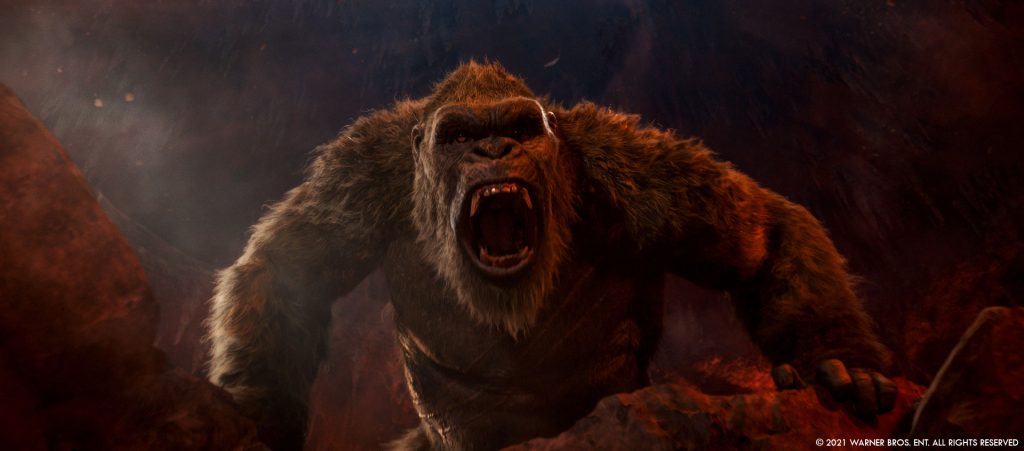
How did you help on-set the cast and crew to visualize Godzilla and Kong?
The previs and various concept references were always available on set. Adam would show the cast previs scenes representative of applicable moments. Discussions usually included someone aiming a laser pointer at a green screen/stage wall/ceiling to demonstrate where a creature was in relation to the cast.
Can you elaborates about their creation of these two monsters?
Godzilla was inherited from the previous film King of the Monsters. Kong was inherited from Skull Island. Mecha Godzilla was created specifically for this film.
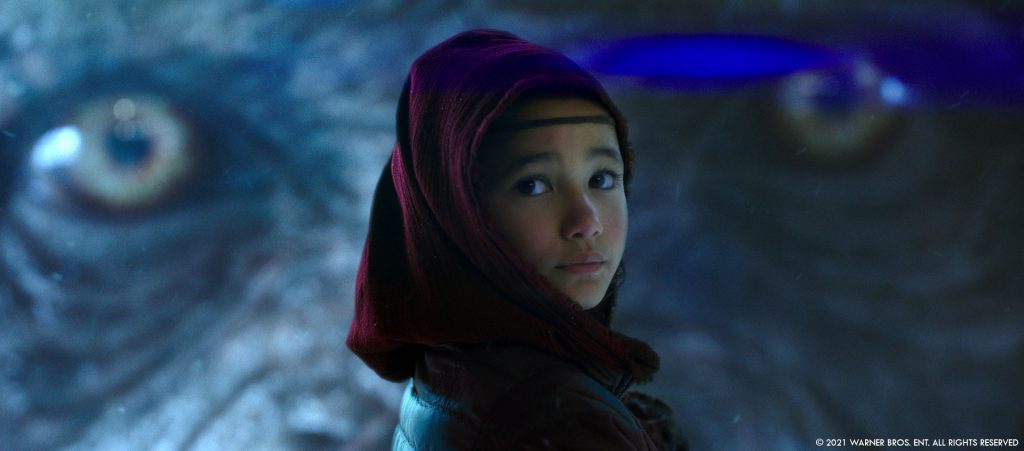
What are the main changes you did with these two iconic monsters since their previous movies?
Godzilla went through no changes model-wise. His geometry and textures are pretty much what you saw in KOM. Kong was aged up significantly from Skull Island which was essentially a period piece set in the 70s. So he’s bigger and has more visible musculature. His hair is longer and has lots of grey in it. The scars are the same. We give him fresh ones in the end battle.
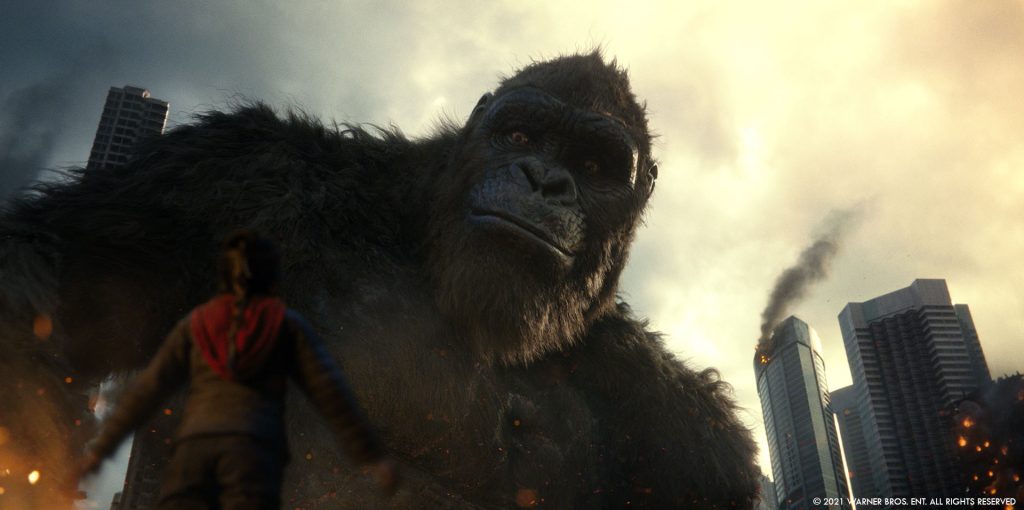
How does their massive size affects your work for animation, lighting, textures?
You have to maintain a perceived high level of detail to buy the massive scale of the creatures. That’s where we start. Once you get into lighting, FX and rendering, a lot of the detail flattens out naturally because to fit the whole creature into a field of view, you tend to be hundreds of feet away from it, causing depth cue and atmosphere to put it appropriately into the distance. But it all starts with a ton of detail: scales, hair, dust, dirt, grit.
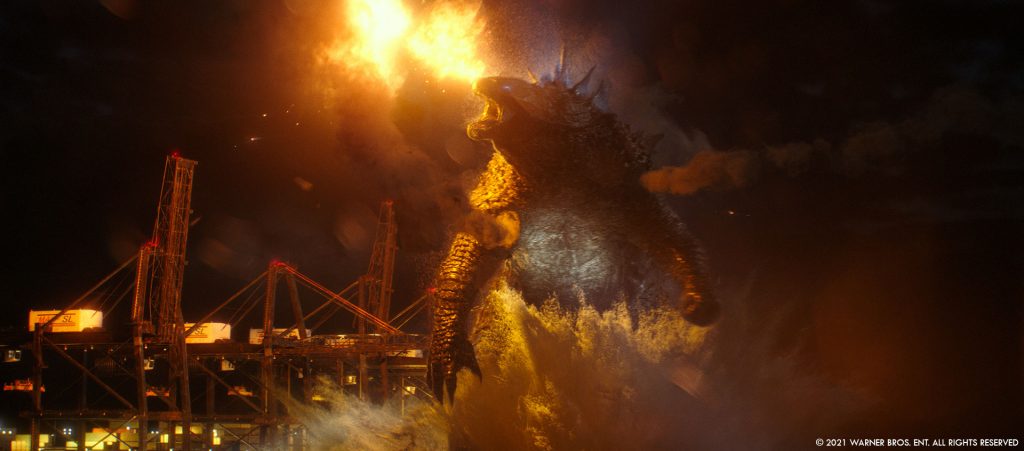
Can you tell us more about the animation work especially during their many fights?
Using our postvis already in the edit and once our hero assets were sufficiently detailed and rigged, we would spitball with Adam about what he wanted the characters to do that he hadn’t yet seen. Bryan Hirota and his Scanline team in particular helped create a tight feedback loop where they would take Adam’s notes, animate the characters and generate multiple camera views of Adam’s desired action. Adam and his editor could use those takes as they would raw live action footage and create detailed assemblies of beats Adam wanted to see. The animation was of a higher level than simple blocking so the filmmakers could get a genuine feel for the final animation. Weta did the same for their all-CG shots, as did MPC for the Neon Night Fight. That pipeline was essential for honing all the beats, not only the fights but the more contemplative Kong moments as well.
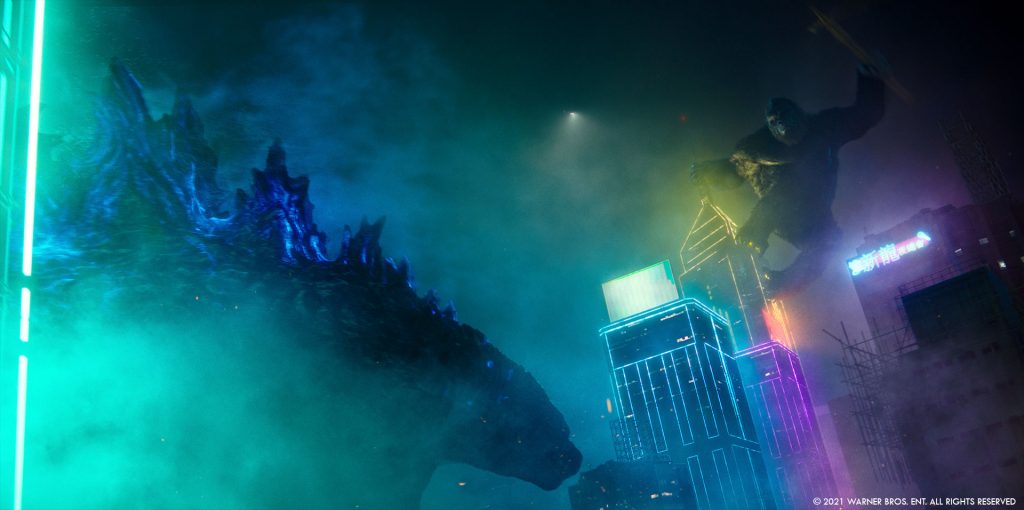
Did you received specific influences and references for their fights?
Adam knows everything about the other Godzilla and Kong films. So there were beats from past films we tried to update. But he also pointed us to wrestling moves. Another reference was to look at aggressive reptile movements to give Godzilla a few down-on-all-fours moments to highlight his animalistic side, instead of walking and attacking on two legs all the time.
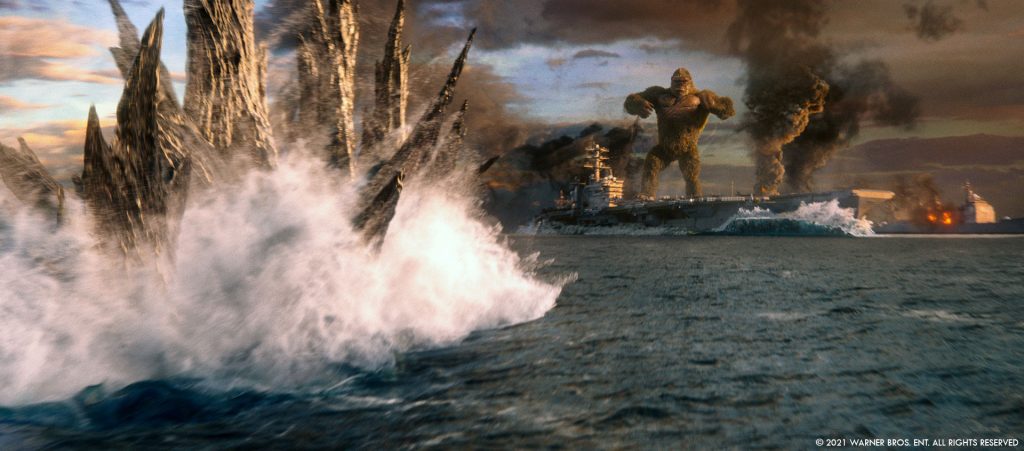
Some fights happens underwater and under heavy rain. How did you handle these challenges?
Right away I discussed the scene with Bryan Hirota, with whom I’ve worked for about 30 years. His team at Scanline is proficient at complex fluid dynamics, and this scene seemed tailor made to their strengths. During pre-production, we looked over the Ocean Battle previs which was quite far along and selected 4 shots from it as a test, not only of the possible look of the scene but also of Scanline’s ability to handle the title characters. Those 4 shots — comprising the main beat on the aircraft carrier — became the main marketing beat for the film.
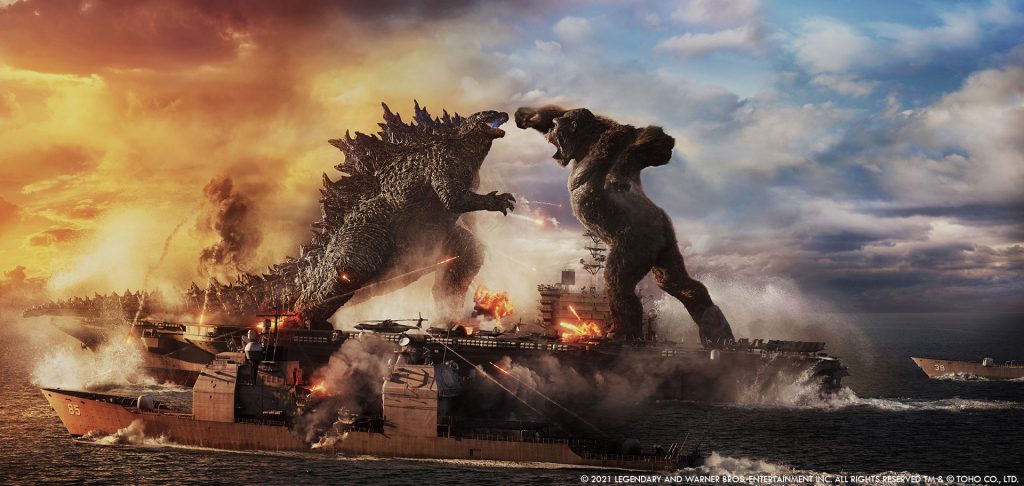
Can you tell us more about the design and creation of Mecha Godzilla?
Mecha Godzilla was already designed by Owen Paterson and his art department by the time I got to the project. We handed over all of the concept art and the zBrush files to Scanline so they could up-res the fine detail to make him look real and to scale. The design was very iconic with clean lines. Definitely a robot Godzilla, but also streamlined to be almost scorpion-like. Adam added a lot of ideas as to how he should move — quicker and more sleek — and how we should avoid the cluttered Transformers look and keep him more simple in his details. From there we had many discussions with Adam about what his powers might be, what extra energy or armaments he could bring to the fight against Godzilla and Kong. We did look at Mecha Godzilla from past films, and there are nods to some of his powers in there.
The amount of destructions is insane especially in Hong Kong. How did you handle this aspect?
At this time in CG simulation evolution, most teams have a destruction kit that can be used for all kinds of materials and situations. I think collectively I and the other supervisors I work with don’t shy away from destructive situations. We just try to make them make sense and as interactive with the characters as possible.
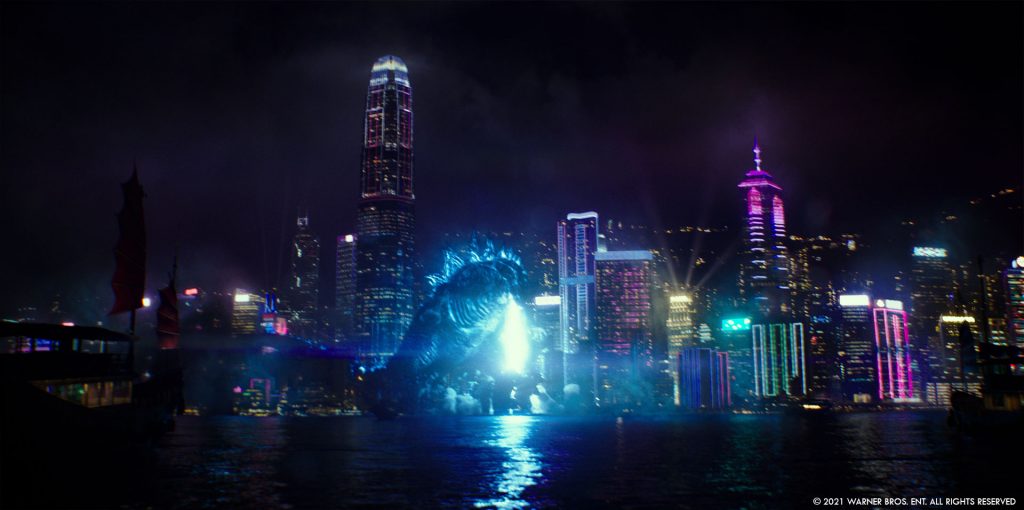
Can you elaborates about the design and creation of the Hollow Earth?
Using the concept art as a guide, we were guided by Adam, Production Designers Owen Paterson & Tom Hammock and locations to use Hawai’i as a foundation for the various landscapes. The initial concepts pointed to a very moody, almost Day for Night look. That changed as we visited various locations for photography and Adam started laying out the order of the changing topology in Hollow Earth. He presented the idea of it not being an empty sphere, but more of a hamburger shape that allowed the “ceiling” to show in the sky throughout the scene. Working with Kevin Smith and his team at Weta, we took Adam’s notes about how gravity worked, which side of the hamburger we started on, how we got to the inversion layer to settle on the opposite surface to find the Temple, how that landscape started lush but ended more arid and imposing. We then ID’d reference plate footage that best represented these evolving landscapes. This footage was used as a guide by Weta to generate the Hollow Earth version which was populated by strange looking foliage, Skull Island birds, luminous fungi, waterfalls and active volcanoes.
There were a lot of ideas that needed to be brought together in a way that made the internal logic of the world make sense. Weta did 2D studies of these looks which coalesced into what you see in the film. There was an early idea of how Hollow Earth was lit by many fierce electrical storms, which actually became one huge storm over the Temple, like a sign post of where we’re always trying to go. And even though you don’t know that detail until the end of Kong’s journey to get there, you can actually see it from the first wide shot of Kong and the expedition falling into Hollow Earth.
The Temple itself was always the key to Kong’s history. While the basic layout of the space was defined early on, the details of what was going to take place kept changing until pretty late in the schedule. Kevin Smith and Weta did a fantastic job of adapting to the incoming notes and we were still given enough time by the producers to maintain a high level of detail in this part of the world.
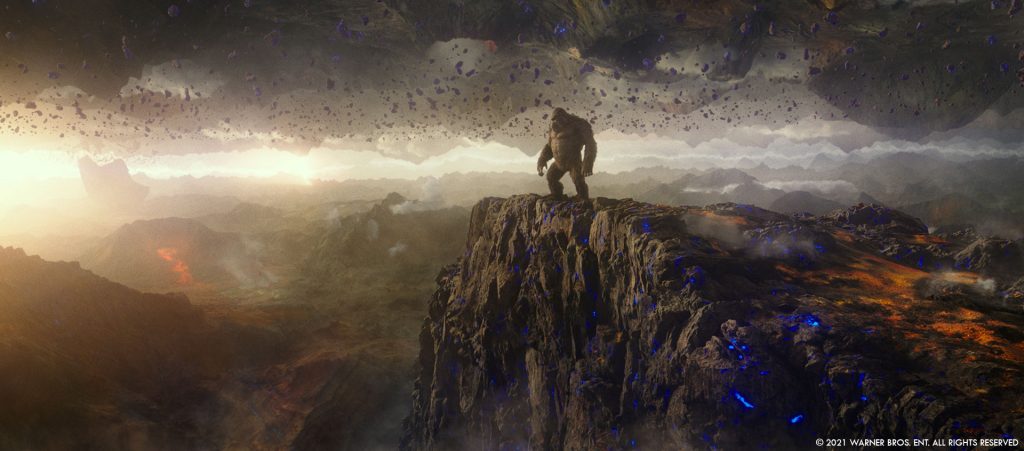
What was the main challenges with the Hollow Earth?
One of challenges we haven’t discussed yet are all the additional creatures roaming around. The Nozuki (huge winged cobras), Lava Crabs, Giant Lizards and Yoshumas (slightly bigger than human birdlike creatures in the Temple) were all present to flesh out and populate the world of Hollow Earth. They were all designed by the art department. Weta modeled, detailed, rigged and animated them for the scene. They were added to give Kong some good character moments, to give organic texture to Hollow Earth, and to menace the human expedition directly in the Temple.
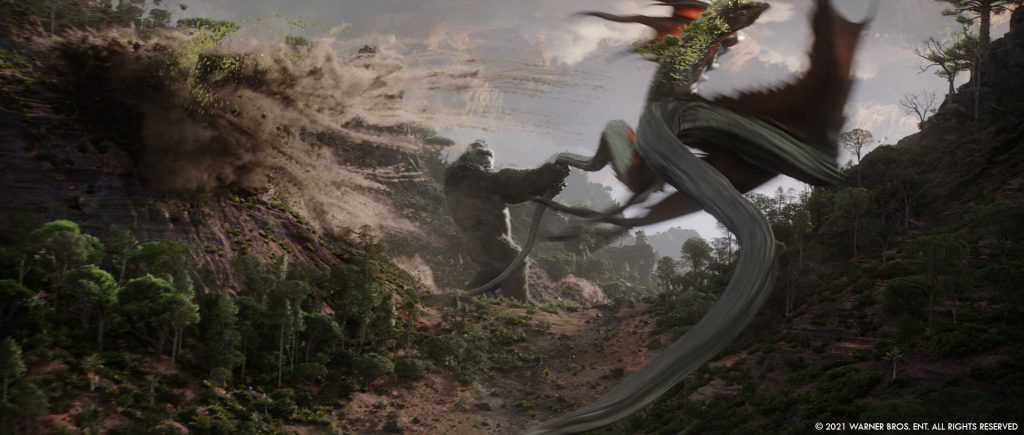
How was the collaboration with their VFX and Animation Supervisors?
I’ve worked with Scanline, Weta and MPC on my past shows. Luma Pictures was a welcome addition to the mix. As I stated before, Bryan Hirota and I have worked together on many projects. Kevin Smith and Kevin Sherwood at Weta were a new supervisor/producer team and I had great time with them. Pier Lefebvre led the MPC team, which was great as he and others on his team had worked on the other Godzilla films. Pier was also instrumental in acquiring the massive amount of Hong Kong city reference used by MPC and Scanline for the 3rd Act. Brendan Seals supervised Luma, filling in the gaps between the Monster Beats, creating the Maglev Train, the Hangars at either end, along with many other sometimes “invisible effects” throughout the film.
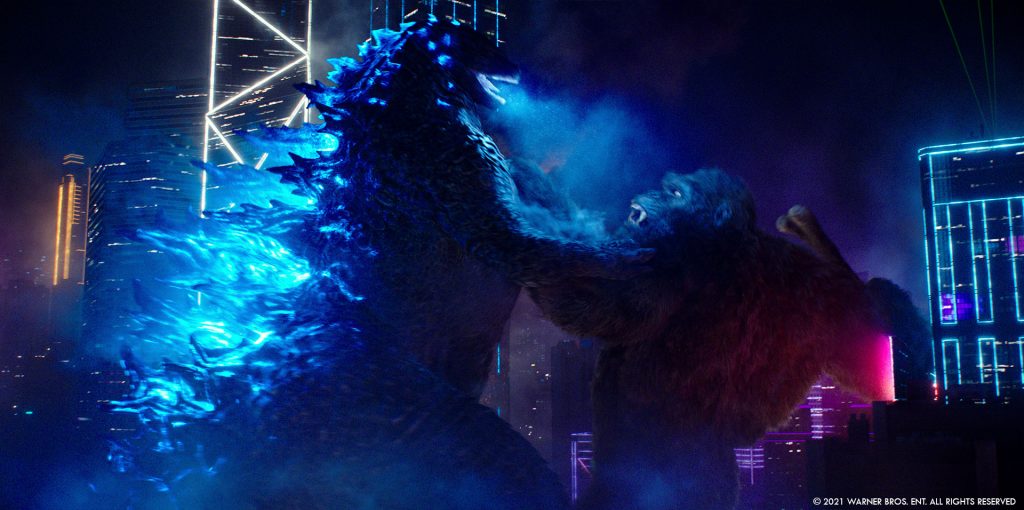
What is your favorite memory from the show?
Nalu’s Tequila Room…Oahu and Gold Coast Editions.
How long have you worked on this show?
My official start was the beginning of June 2018 and we wrapped mid-June 2020.
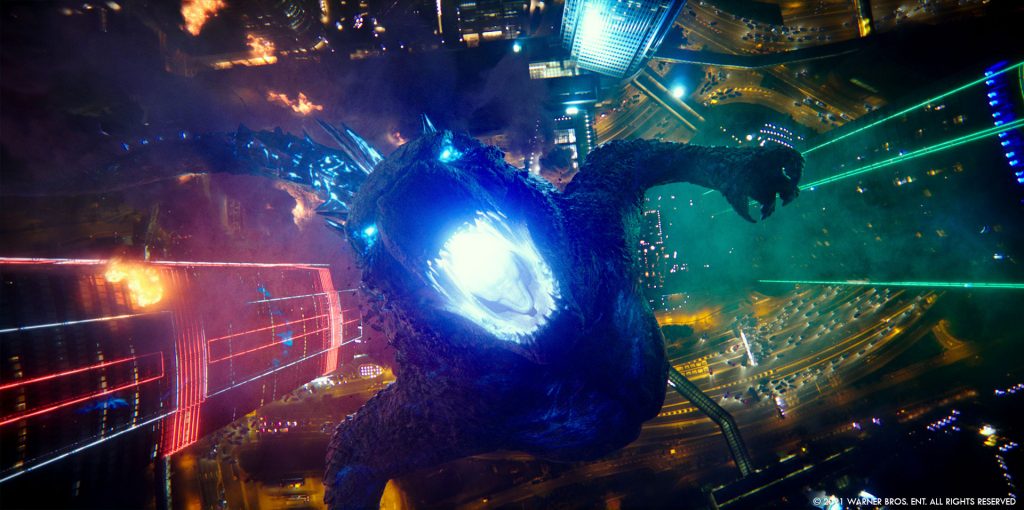
What’s the VFX shots count?
Around 900 shots. Most of them HUGE.
What was the size of your team?
My VFX team including VFX editorial was about a dozen people.
What is your next project?
I am currently shooting The Flash in London.
A big thanks for your time.
WANT TO KNOW MORE?
MPC: Dedicated page about Godzilla vs Kong on MPC website.
Scanline VFX: My interview of Bryan Hirota (VFX Supervisor) with Chris Mulcaster (CG Supervisor), Jim Su (Creatures Supervisor), Kishore Singh (CFX Supervisor), Jonathan Freisler (FX Supervisor) and Eric Petey (Animation Supervisor) – Scanline VFX
Weta Digital: My interview of Kevin Smith (VFX Supervisor), Edwina Ting (Animation Lead) and Stephen Tong (CG Supervisor)
Weta Digital: Dedicated page about Godzilla vs Kong on Weta Digital website.
© Vincent Frei – The Art of VFX – 2021


